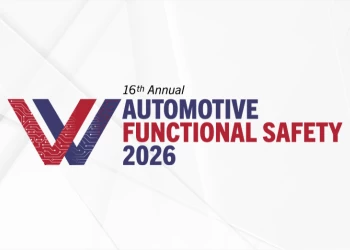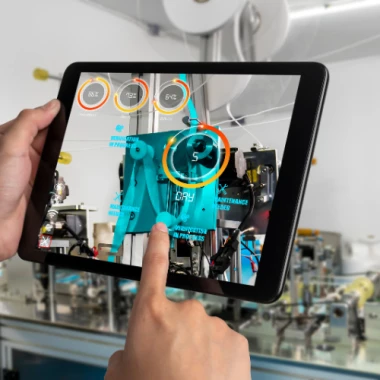The Holy Grail of safety: Integrating active and passive safety systems
Add bookmarkIt took more than fifty years for the automotive industry to introduce safety devices that protected passengers in the event of an accident. In 1956 Ford became the first mass motor-manufacturer to promote safety by offering front lap belts as an option, along with a padded dash, less obtrusive instrument panel controls, and a "deep dish" steering wheel.
The company also added Life Guard door latches to keep doors from opening during a crash. In these early years there was only one form of safety: Passive, aimed at protecting passengers in a collision.
Image Source: Old Car Brochures
More recently the introduction of other safety devices such as three-point seat-belts and airbags, and structural improvements to crumple zones have greatly improved the safety of modern vehicles. However, while these passive measures help to minimize injury once an accident is happening they do nothing to keep a car from spinning off the road or rear-ending the vehicle ahead.
Active safety devices that assist the driver in avoiding an accident were introduced some thirty years after the first passive safety systems. With the introduction of anti-lock brakes (ABS) in the early 1980s and electronic stability control (ESC) and traction control a few years later, automobiles were finally providing a means to keep drivers from getting into accidents; not merely protecting them after the fact.
While there’s no doubt that these systems have significantly improved passenger safety, the European Commission reported that in 2016 more than 25,000 people still lost their lives on EU roads and a further 135,000 were seriously injured, costing the community an estimated €100 billion. According to a European Transport Safety Council analysis, the number of road deaths will need to drop by 11.5% per year in order to meet the EU’s target of halving the number of annual road fatalities in the EU by 2020, compared to 2010.
While passive and active safety systems have significantly improved the safety of cars across all segments, the industry believes the power of future safety systems lies with the integration of the two structures. Sensors, controllers, data interpretation and intervention protocols have to work seamlessly to take safety performance to the next level.
Continental’s Active Passive Integration Approach
Early adopter Continental, contends its Active Passive Integration Approach (APIA), which links existing active safety devices such as ABS, Adaptive Cruise Control (ACC) and ESC with passive safety systems such as seatbelts and airbags, can prevent crashes before they occur.
APIA enables up to 22 safety components and systems on a car to rapidly exchange data about the activities of the driver, the behavior of the vehicle and the status of the driving environment.
For instance, a “closing velocity” sensor detects nearby events or objects that could cause an accident, such as a vehicle ahead suddenly braking.
A “danger control module” computes the hazard potential and, if an accident appears imminent, initiates a staged response to minimize its severity. The driver gets a visual or “haptic” warning (accelerator pedal vibration), seatbelts are pulled taut, windows and sunroof close automatically, the brake system is pre-pressurized and front seats are brought to the ideal position for airbag deployment.
Preparing for the accident
The results of a study conducted by the University of Michigan Transportation Research Institute and Ford Motor Company into the effect of integrated active and passive safety systems on injuries to passengers in a frontal collision, showed that the weighted average of injury risk was reduced by between 17% and 48% when the systems were combined.
Using a combination of field data analysis, naturalistic driving data analysis, and computational simulations, the study chose an active safety system equipped with a driver assist (DA) that allowed autonomous braking as the platform for the evaluation.
Image Source: TASS International
The field data analysis, based on an assumption that pre-crash braking contributed to 20% of the crash avoidance, measured changes in the position of the driver’s head during 470 hard braking events in a naturalistic driving study. The results showed that the drivers’ head was mostly in the center position before the brakes were applied. However, during deceleration the posture of the drivers changed significantly, with drivers leaning forward or backward for extended periods.
Parametric studies with a total of 4800 MADYMO (a worldwide standard software for analysing and optimising occupant safety designs) simulations showed that both delta-V and occupant pre-crash posture had pronounced effects on occupant injury risks and subsequently on the optimal restraint designs.
By combining the safety systems the weighted average of injury risk predicted by the 50th percentile Anthropomorphic Test Device (ATD) model and human body model, reduced by 17% and 48% respectively.
Applying the concept of integrated passive and active safety to best protect passengers in case of an accident, Mercedes-Benz’s PRE-SAFE system has received several honors, including awards from the independent European safety association Euro NCAP.
Mercedes-Benz’s PRE-SAFE evolves to keep passengers safe
PRE-SAFE is an integrated safety system that is automatically activated at speeds above 30km/h. The system monitors the dynamic state of the vehicle (speed, rotation etc.) and the driver’s inputs to steering, accelerator and brakes, to determine whether or not emergency action is being taken.
If the system senses that a collision is imminent, it readies the passengers by pre-tensioning the seat belts using reversible tensioners, optimises the occupants’ seating position if electrically adjustable seats are fitted; and, if excessive rotation or side slip are detected, concluding that a side impact or roll-over is considered likely, it closes the electric windows and sunroof.
Over time Mercedes-Benz has extended the range of features to include additional functionality, such as the PRE-SAFE impulse side function. Unlike in a frontal collision, there is only a limited crumple zone available in the event of a side impact, so to increase the size of the zone, the occupants in the danger area are moved away from the door and towards the centre of the vehicle just before the impact.
To do this, the system inflates air chambers in the side bolsters of the backrest within a fraction of a second of an imminent side impact being detected. The inflated chamber moves the occupant to the side, away from the danger area and towards the vehicle centre, thus increasing the distance between the passenger and the door.
To further reduce the side-effects of a collision Mercedes-Benz makes use of the body’s natural reflex to prepare the occupants’ ears for the loud noise experienced during an accident: A muscle in the ear, known as the stapedius, reacts to loud noises reflexively by contracting, briefly changing the link between the eardrum and the inner ear, thereby providing greater protection against high sound pressures.
Mercedes-Benz uses this natural reflex as a biomechanical ear protection for the PRE-SAFE Sound innovation. By emitting a short interference signal through the vehicle's sound system the stapedius’ reflex is triggered, which prepares the ears for the noise and thus lessens the risk of hearing discomfort or damage.
So while in the past, road users were expected to take complete responsibility for safety, concepts such Vision Zero are gradually shifting the emphasis of safety to underlying ethical principles that propose “it can never be ethically acceptable that people are killed or seriously injured when moving within the road transport system."
Responding to this concept where responsibility is shared by transportation system designers, vehicle manufacturers and road users, OEMs are stepping up to the plate by making sure integrated passive and active systems offer passengers the best protection at all times; whether actively avoiding an accident or using ‘smart’ integrated systems to limit injury to occupants in the event of an accident.
Sources:
CLEPA; European Association of Automotive Suppliers; CLEPA Position Paper on the revision of the General Safety Regulation; April 2018; https://clepa.eu/mediaroom/clepa-position-paper-on-the-revision-of-the-general-safety-regulation/
Mercedes-Benz; Protection in accident scenarios: Mercedes-Benz PRE-SAFE; 2018; https://www.mercedes-benz.com/en/mercedes-benz/innovation/protection-in-accident-scenarios-mercedes-benz-pre-safe/
J Hu, C Flannagan, S Bao, R McCoy, K Siasoco, S Barbat; SAE International; Integration of active and passive safety technologies - a method to study and estimate field capability; November 2015; https://www.sae.org/publications/technical-papers/content/2015-22-0010/
Virtual Vehicle; Combined safety systems in vehicles: the integrated safety toolchain; https://www.v2c2.at/deep-learning-with-the-automated-drive-demonstrator-2-2-2-2/































